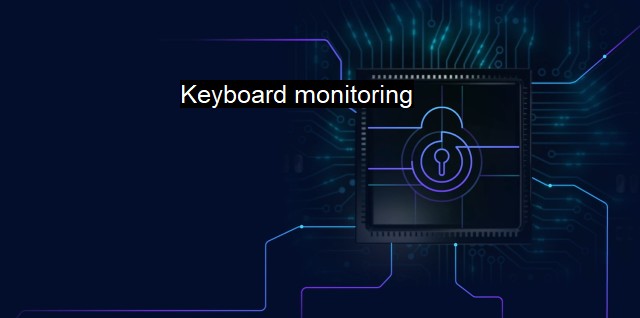What is Keyboard monitoring?
Understanding Keyboard Monitoring Tools: Definitions, Objectives, and Methods
Keyboard Monitoring, in the context of cybersecurity and antivirus software, refers to the practice of tracking, recording, or detecting a user's inputs made on the keyboard. This procedure encompasses everything from keystrokes to typed data collected through a keyboard for later analysis. Keyboard Monitoring serves both benign and malicious purposes - it is employed for legitimate uses like troubleshooting, parental control, productivity assessment and law enforcement. In practice it often represents a serious privacy concern, intrusion, and threat to personal security due to its misuse for hacking and various cybercrimes.As part of cybersecurity efforts, a keen understanding of Keyboard Monitoring is necessary because one prominent keyboard monitoring technique is keylogging, where nefarious methods are employed to surreptitiously capture the data that users type into their keyboards. The information collected via keyloggers can range from regular text entries to sensitive information such as usernames, passwords, credit card details, and even confidential correspondence.
The keylogging method can be hardware-based or software-based. Hardware keyloggers are physical devices connected to the keyboard or computer while software keyloggers are programs or scripts that run on the affected system. Both pose substantial security threats but software keyloggers are swiftly becoming more common due to their capacity to systematically bypass security measures and transmit collected data over the Internet.
Various antivirus software and cybersecurity tools are specifically designed to detect and prevent such intrusions. Effectively countering Keyboard Monitoring involves both technical solutions and user vigilance. Antivirus programs continuously scan the system for malicious activity and unauthorized software installations to prevent software-based keyloggers. They can recognize the salient patterns that these programs follow and quarantine or eliminate them as threats hence aiding in protecting sensitive information.
An essential partner to antivirus software, firewalls play a proactive role, hindering the transfer of logging data by closing vulnerable inbound and outbound network ports. Because keyloggers frequently rely on internet transmission to send logged information to the attacker, safeguarding these transmission points expands defensive measures.
Anti-keylogging tools offer an extra layer of protection by rendering keylogging practices useless: they encrypt every keystroke at the keyboard level and then decrypt it at the receiving application, allowing the data to go through without potential breaches from keyloggers.
Another critical area is User Behavior Analytics (UBA) tools, which use machine learning and statistical analysis to understand regular user behavior. Should unusual patterns or suspicious activity be detected, ranging from excess login attempts to unconventional keystroke behavior, an automatic alert can be activated, enabling quick threat resolution.
With all these cyber-security measures in place, the last line of defense resides within the users themselves. Raising cybersecurity awareness can empower users to avoid phishing schemes or suspect social engineering attempts, use strong passwords, update software promptly and refrain from accessing unsecured or dubious websites.
Through combining preventative cyber-security tools such as antivirus software coupled with educating users about potential threats, it is possible to mitigate the risks associated with keyboard monitoring and ensure a safer cyberspace experience. Hence, understanding what keyboard monitoring entails is crucial in catalyzing proactive response and making effective protection mechanisms against it possible.

Keyboard monitoring FAQs
What is keyboard monitoring?
Keyboard monitoring is the process of tracking and recording the keystrokes made on a keyboard. This technique is often used in cybersecurity and antivirus solutions to detect malicious activities and prevent unauthorized access to sensitive information.Why do cybersecurity and antivirus software use keyboard monitoring?
Cybersecurity and antivirus software use keyboard monitoring as a proactive measure to detect and prevent malicious activities such as keylogging, phishing, and credential theft. The monitoring process helps to identify suspicious keystrokes and prevent unauthorized access to sensitive information.Is keyboard monitoring legal?
Keyboard monitoring is legal in most cases as long as it is done with the consent of the user. However, there are some legal requirements that must be met before implementing keyboard monitoring, such as obtaining the user's informed consent and providing clear disclosure about the monitoring activity.Can keyboard monitoring be bypassed by hackers?
Keyboard monitoring can be bypassed by sophisticated hackers who use advanced techniques such as encryption and obfuscation to conceal their malicious activities. Therefore, it is important to implement multiple layers of security measures, including antivirus software, firewalls, and intrusion detection systems, to protect against different types of cyber threats.| | A | | | B | | | C | | | D | | | E | | | F | | | G | | | H | | | I | | | J | | | K | | | L | | | M | |
| | N | | | O | | | P | | | Q | | | R | | | S | | | T | | | U | | | V | | | W | | | X | | | Y | | | Z | |
| | 1 | | | 2 | | | 3 | | | 4 | | | 7 | | | 8 | | |||||||